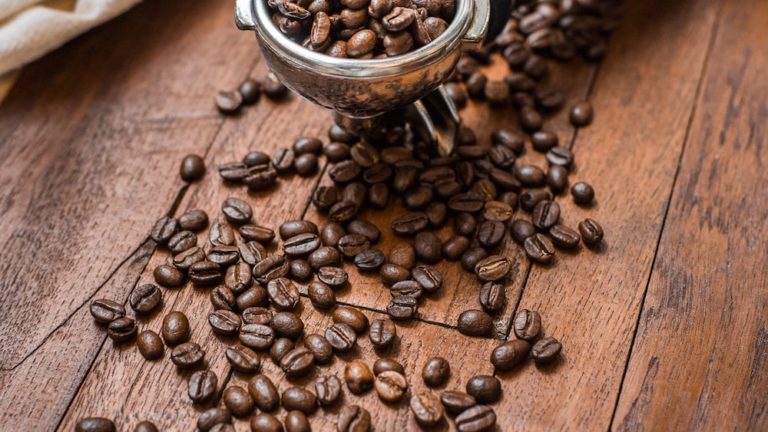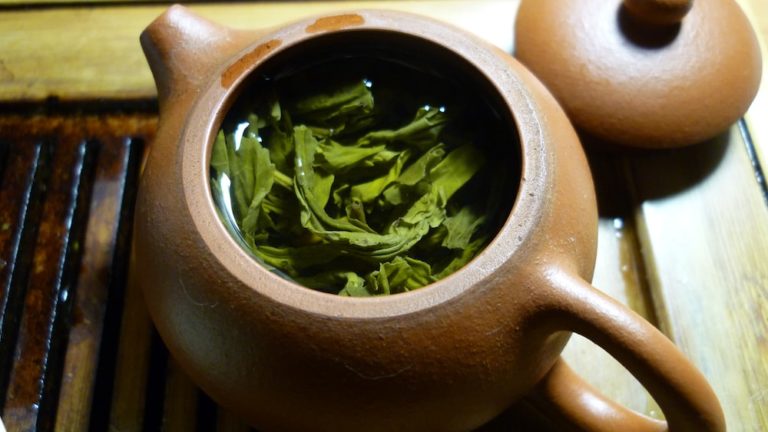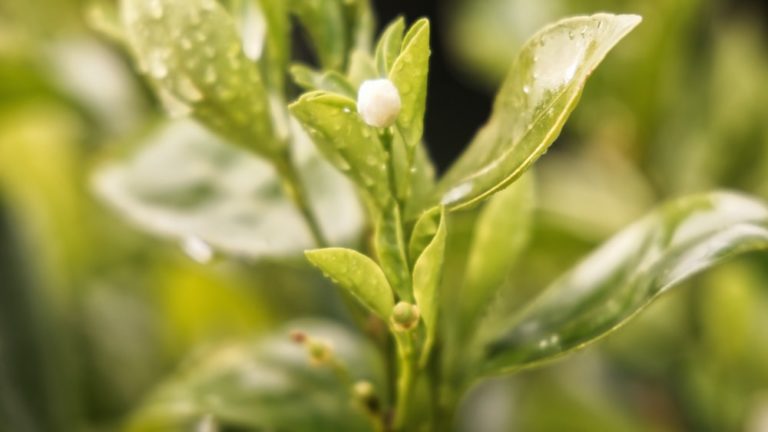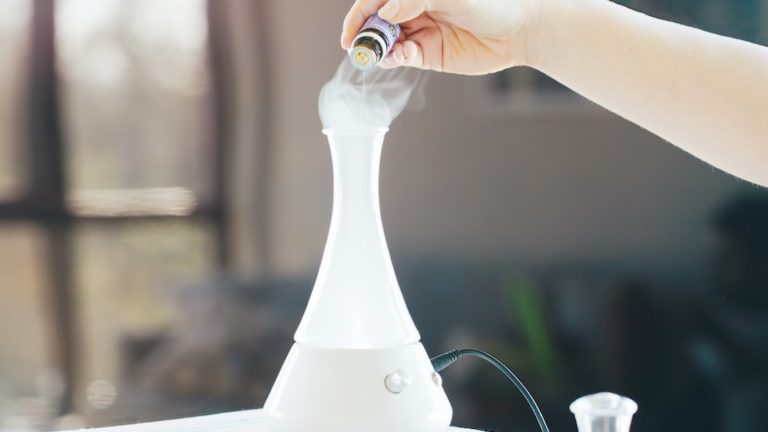Perfect Black Tea Water Ratio: Master The Art Of Brewing
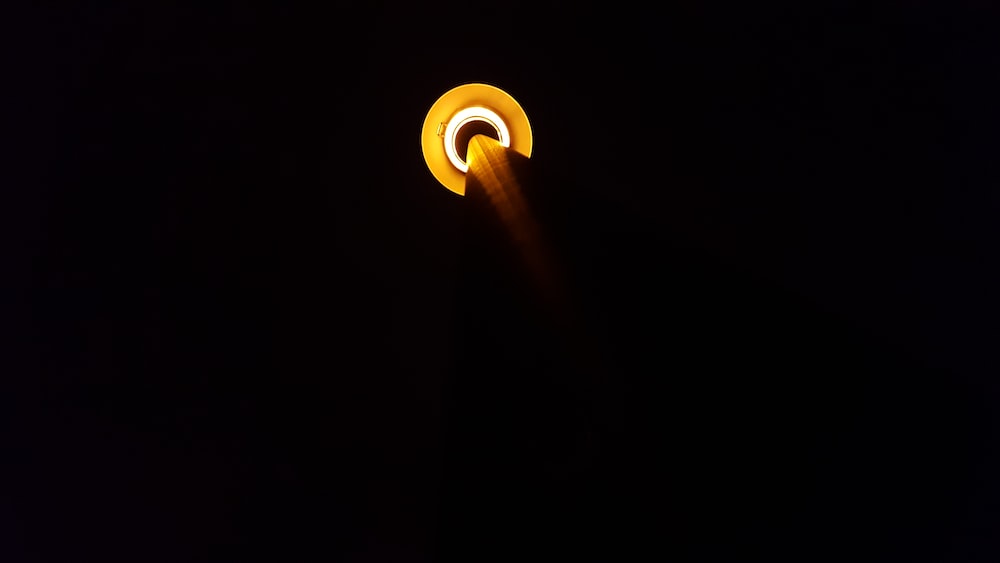
Perfect Black Tea Water Ratio: Master The Art Of Brewing
Aristotle once said, “Quality is not an act, it’s a habit.” Well, if that’s the case, it’s time you developed the habit of crafting the perfect black tea, wouldn’t you agree? If you’re a veteran tea enthusiast or just teetering on the edge of stepping into this flavorful world, this guide will show you how.
The secret lies in mastering the art of brewing, specifically figuring out the elusive black tea to water ratio. It’s a delicate balance, almost like juggling flaming torches while riding a unicycle. And not just any unicycle, mind you, but one precariously floating on a tightrope suspended above a pot of black tea!
You might be thinking, “Me? Brewing black tea like a pro?” In the words of a certain mad tea-drinking hatter, “Why, it sounds entirely improbable, but by the time we’re done, it’ll be no more unusual than a cat grinning at a tea party.”
Understanding Black Tea
Black tea stands mightily as the Iron Man among its less robust comrades in the world of tea. Yes, it’s true! Green, white, and oolong teas are all fantastic, but black tea packs quite a punch – in terms of taste, aroma, and indeed, its often overlooked superpower, health benefits.
Origins and Types of Black Tea
Black tea, the superhero of the tea world, didn’t just descend from the tea heavens. It had an origin story. Its roots go back thousands of years to China. Over time, its popularity skyrocketed, and now it’s practically idolized across the globe, particularly in India, Sri Lanka, and Africa.
Grown in different environments and processed variously, black tea shows off a remarkable variety of types. You’ve got your staple Darjeeling, Assam and Ceylon black teas, and they all have their distinctive personalities, like different breeds of dogs, each barking in their unique fashion.
Then there are other intriguing types such as Lapsang Souchong, the mysterious black tea with a smoky aroma – imagine sipping tea by a campfire. Or the mellow, subtly sweet Keemun black tea. There’s a black tea for every mood and occasion, you see!
Black tea, with its remarkable variety of types and origins, offers a black tea for every mood and occasion.
Health Benefits of Black Tea
Your cup of black tea doesn’t just bring pleasure to your taste buds, my tea-loving friends, it’s like having your own personal healthcare assistant. This magical brew is a powerhouse of antioxidants known as theaflavins and thearubigins, fancy words that somehow manage to sound both intimidating and soothing at the same time, right?
For one, these antioxidants can help in reducing cholesterol levels. Imagine these antioxidants as your body’s cleaning crew, mopping up the cholesterol and carting it off. And the plot thickens; black tea is thought to boost heart health and possibly reduce the risk of stroke.
Plus, regular consumption of black tea contributes to better gut health. It’s like the ‘Honey, I Shrunk the kids’ version of a plumbing job at a molecular level, ensuring things keep flowing smoothly.
The Importance of Water Quality in Brewing Black Tea
Just as Superman can’t save the day without his superpowers, black tea can’t reach its full potential without an equally important sidekick; water. Yes, you heard it right. The quality of water you use plays a significant role in determining the endgame (taste) of your black tea.
The Role of Water in Tea Brewing
When it comes to brewing black tea, water is not just a mere spectator, it’s a vital player. Picture water as a stage on which the beautiful play of black tea flavors unfolds. The type and quality of the water can dramatically alter the taste and aroma of your cup of tea.
Consider the water-to-tea ratio. Too much water can dilute the strength, making it taste as weak as a kitten trying to roar like a lion. On the other hand, too little water can turn your tea into an overly potent potion. It’s like choosing the perfect duet partner for a knockout performance on a tea soundtrack.
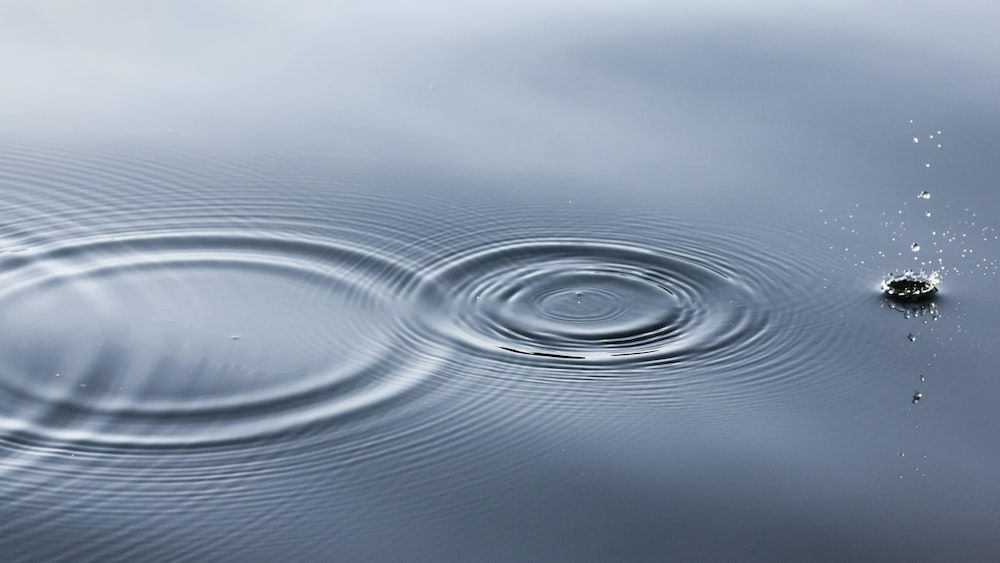
Now imagine water as an enthusiastic conductor for all the flavors and aromas hidden within your black tea leaves. It frees the leaves to express themselves fully, giving you a melodious concerto of flavors in every cup of tea.
Choosing the Right Water for Black Tea
So, what’s the best type of water for your black tea? Distilled? Tap? Spring? Well, folks, you might as well pick a suit for a job interview. The wrong choice, and you could find the hiring manager (your taste buds) wincing.
While tap water is convenient, it’s often chlorinated, which can spoil the true flavor of your tea. Distilled water, being too pure, can make your tea taste flat. It’s like watching a silent movie after being used to technicolor musicals.
The winner? Spring or filtered water, usually. They contain just the right amount of minerals to accentuate the flavors of your black tea. It’s the Goldilocks zone of water choice – just right.
The Art of Measuring Loose Leaf Black Tea
In the world of tea, there’s an art to measuring loose leaf tea, especially black tea. It’s your Bob Ross stage, where every right pinch is a happy little tree on your canvas of black tea creation.
Tools for Measuring Loose Leaf Tea
Now on to the tools of the trade. Open your kitchen drawers wide, my tea comrades. For a great cup of black tea, you’ll need measuring spoons and a digital scale.
Measuring spoons are like your trusty sentinel, guarding against oversteeping. They help you measure out the right amount of black tea leaves for that perfect brew. One heaped teaspoon can be the golden ticket for your perfect tea voyage.
A digital scale, on the other hand, is for those who want to be the James Bond of tea brewing. Measuring with a scale keeps your tea results consistent. A quick succession of 007-level decisions (2-3 grams of tea per 200 ml of water let’s say), and you’re on your way to your very own tea-tales.
How Much Loose Leaf Black Tea Per Cup
Brewing the perfect cup of black tea is an art. But, like any other masterpiece, it begins with a few basic measurements. Now, you might find yourself asking, “How much loose leaf black tea should I use per cup?” Don’t sweat it! The general consensus among tea connoisseurs is that a single teaspoon is usually enough for an eight-ounce cup. But wait! Here’s the fun part. Much like how one size doesn’t fit all, the one-teaspoon-philosophy might not work for every tea variety, or even every person.
Why? Tea leaves come in all sorts of sizes. Larger leaves will yield a weaker tea if we stick to our single teaspoon rule. Put simply, it’s not so much about the number of leaves, but the weight. A general guideline is to use around 2 grams of tea per 8 OZ of water. In tea terms, this often comes out to about one single teaspoon for smaller tea leaves and one tablespoon for larger ones.
Mastering the Black Tea to Water Ratio
Now that we’ve got our measurements down, let’s move onto something a bit trickier – the black tea to water ratio. This is where the science meets the art, my fellow tea enthusiasts, and things truly start to get exciting. A harmonious balance between tea leaves and water can elevate an ordinary tea-drinking experience into a gustatory celebration. So buckle up and let’s embark on this steep (pun intended!) learning curve together!

Ideal Black Tea to Water Ratio
Attempting to nail down the perfect black tea to water ratio can feel a bit like trying to catch a mouse on a sugar high! It’s a bit of a wild ride, isn’t it? But for most black teas, a good starting point is one teaspoon of loose leaf black tea to eight ounces of water. This can be considered the “standard” ratio and offers a sturdy foundation on which to build your tea brewing expertise.
But you’ll want to keep in mind that different types of black tea might do a little dance on your taste buds with slightly adjusted ratios. For example, with Darjeeling tea, which is known for its subtle flavors, a higher leaf to water ratio can bring out a fuller spectrum of flavor notes. Conversely, for robust tea types like Assam, less is more. A slightly lower tea to water ratio can help curb its natural bitterness while highlighting its malty sweetness.
So, my dear tea aficionados, don’t be afraid to experiment by adjusting the ratio. Who knows, your wild card ratio might just make the flavors hang delightfully on your palate, making your tea sipping session an absolute joyride!
Adjusting the Ratio for Personal Preference
Here’s the beautiful part about brewing – the power is in your hands! It’s absolutely okay to treat standard ratios as mere suggestions, because your tea should be as unique as you are. Enjoy robust cups that pack a punch? Feel free to add more tea leaves. If subtlety is your cup of (black) tea, cut back on the leaves a little.
Do remember, though, that there’s a difference between personalizing and completely overthrowing the basic principles of brewing. Increased leaves can mean bolder flavors but done excessively, it can also mean a bitter, over-extracted brew. This is where the waltz of brewing comes into play; dance around, find your rhythm, but don’t step so far out that you can’t hear the music anymore.
The Influence of Brewing Time and Temperature
While the focus has been rightly on the weight of the tea leaves and water ratio, there are two other silent, yet powerful characters in our black tea drama – brewing time and temperature. It’s like a kitchen chemistry lab, where timing and heat dramatically influence our final product. So, shelve those tea bags, and prepare to deep dive into the finer nuances of making the perfect black tea.
Optimal Brewing Temperature for Black Tea
Brewing temperatures for black teas prove that occasionally, we need a little heat in our lives. Black teas are robust; they take heat quite well compared to their green and white counterparts. The optimum temperature for most black teas would be around 200-212°F, slightly under a full boil.
But remember, just as black teas themselves vary, so do their preferred temperatures. The more delicate black teas, such as Darjeeling, perform best at a slightly lower temperature, around 190°F. So, if your black tea tastes more like a witch’s potion rather than a delightful brew, chances are the water was too hot. Remember the rule of the thumb: a lower temperature is better than one too high.
The key to brewing a perfect black tea is to find the optimal temperature, which is around 200-212°F, but delicate black teas, like Darjeeling, prefer a slightly lower temperature of around 190°F.
The Impact of Steeping Time on Flavor
On to steeping time, another pivot on which the door of flavor swings. The standard steeping time for black tea is usually between 3-5 minutes. A shorter steep might lead to a weaker tea, while oversteeping could have your taste buds begging for mercy from bitterness!
However, there’s no ‘one-steep-fits-all’. Dainty black teas such as Darjeeling need just about 2-3 minutes, while hearty Assam can take on 4-5 minutes. But these are just baselines. As the captain of your brew, feel free to steer the steeping time in the direction you find most flavorfully fulfilling.
Personalizing Your Black Tea Experience
The voyage of perfecting your personal black tea blend is a journey, an ongoing adventure. It’s about tweaking and trying, about noticing the subtleties – a dash of milk here, a modicum of honey there. And each time, it’s about savoring the unique expression of culture, excitement, and wellness that every sip brings. So go forth, brave tea explorers, and may each cup you brew be steeped in joy and satisfaction!
Adding Milk or Sweeteners to Black Tea
Imagine, if you will, being a piece of pure, delicious black tea, steeping happily in warm water, and then – BAM! – you’re blended with milk or sweeteners. It’s a transformative therapy for any black tea, and one you can experiment with at leisure. The British, they practically wrote the guideline on milk and tea. Consider following their lead by adding a bit of milk to your morning breakfast tea, or why not try a sweet spoonful of honey – talk about a sweet escape!
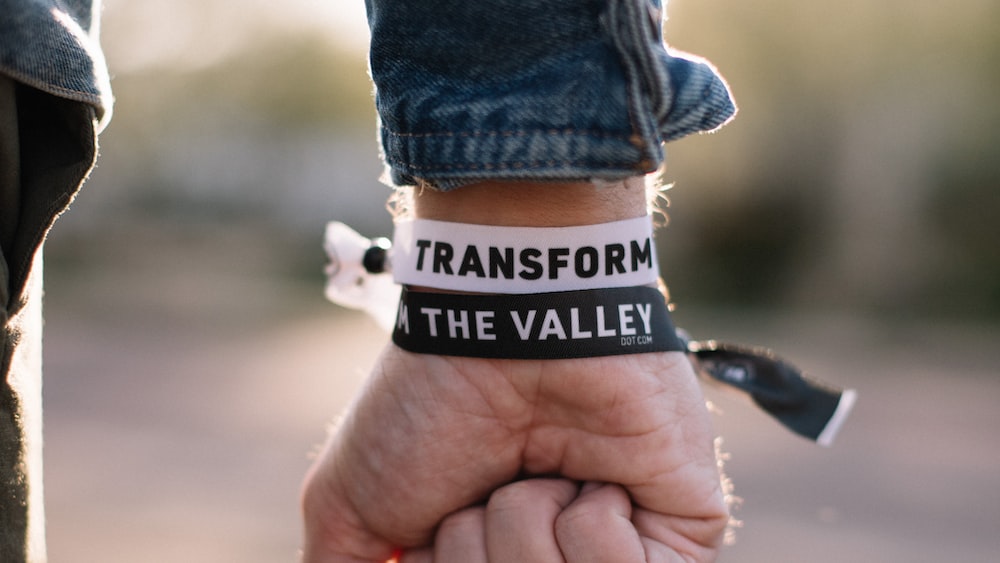
Each of these additions wings its way right to the heart of your black tea, enhancing and altering the flavor profile. Don’t be shy! Milk can soften some of a black tea’s robustness, while a dash of dessert spice–think cinnamon or vanilla–can add a whole new dimension.
Play around, be adventurous. Whether it’s a sachet of your favorite sweetener or a splash of a creamy delight, the world is your tea-milk-and-sweetener oyster.
Experimenting with Different Black Tea Blends
Diving into the ocean of black tea blends, you might find yourself feeling like a walrus at an ocean buffet – with so many flavorful options to sample, where does one even start? No worries, fellow tea aficionados! All you need is a little dauntless spirit to dive head-first into the gustatory delights of black tea.
Ever tried a masala chai blend? Oh, it’s a song and dance of the senses. Then there’s the classic breakfast blend, it’s like the Beatles of black teas – dependable, and always ready to make your day better. Or perhaps you could tap the wild side and experiment with an exotic blend from Yunnan or Assam. The world of black tea blends is rich and vast, so step out of your comfort zone and let your senses do the Waltzing Matilda!
Frequently Asked Tea Questions
1. How does the quality of water affect the taste of black tea?
The quality of water has a mammoth role in determining the profile of your black tea. High-quality water can really spotlight the tea’s nuances, letting them shimmer in the backdrop of your taste buds, making every sip an enigmatic experience. Conversely, low-quality, impure water is like a bad conductor – no matter how talented the orchestra (in this case, our beloved black tea), the performance will be less than favorable.
2. What is the ideal brewing temperature for black tea?
Brewing temperature hugely contributes to the unleashing of the full, robust character of black tea. The sweet spot for this tea? We recommend somewhere in the range of 200-212 degrees Fahrenheit. Too low, and your tea might pull a Houdini and disappear on your palate. Too high, and it could turn into a rampaging monster, leaving a bitter aftertaste in its wake.
3. How much loose leaf black tea should I use per cup?
When it comes to loose leaf black tea, aiming for one teaspoon per 8-ounce cup is a good rule of thumb. However, remember, preferences can vary; you might be a ‘little-more-of-a-good-thing’ person or more of a ‘less-is-more, thank you very much’ kind of tea drinker. The ultimate judge is your taste buds!
4. Can I adjust the black tea to water ratio according to my taste?
Your black tea to water ratio is one of the most personalized aspects of your tea brewing experience. Feel absolutely free to adjust it to your liking. Fancy a stronger brew? Add a touch more tea. Crave a lighter concoction? A dash less tea could be the key. It’s your cup of tea, literally and figuratively!
Conclusion
So, there you have it, my fellow tea-loving comrades – a comprehensive, yet playful dive into the art of brewing black tea. We’ve left no tea leaf unturned, covering everything from selecting your favourite black tea blend to mastering the elusive black tea to water ratio.
But, hey, we’re just the guides here – ultimately, it’s you who holds the power to unlock the magic brewing in your teapot. The road to black tea mastery? It’s a fragrant one, paved with personalized recipes, stick-thy-nose-in aromas, and unforgettably bold flavor experiences. Remember, each brew is a new opportunity to dance with black tea, to mix, blend, and savor, creating a taste that is uniquely, unmistakably you.
Brew onwards, intrepid tea explorers. Until our next tea-soaked adventure, this is Zoe, reminding you to relish every last sip of the journey as you go.


